What Can I Prune in May?
What Can I Prune in May?
In mid-May many people are wondering if it’s too late to prune their shrubs. Some have delayed spring cleanup because the weather has been so cold and damp while others just haven’t gotten to it yet. But here’s the good news: pruning is a great way to get outside and reconnected with nature, and you don’t have to do it all at once. Think about doing a few shrubs one day, another the next, and a couple a day or two later. Sometimes yard tasks seem much more manageable when taken a little at a time. Here are a few examples.
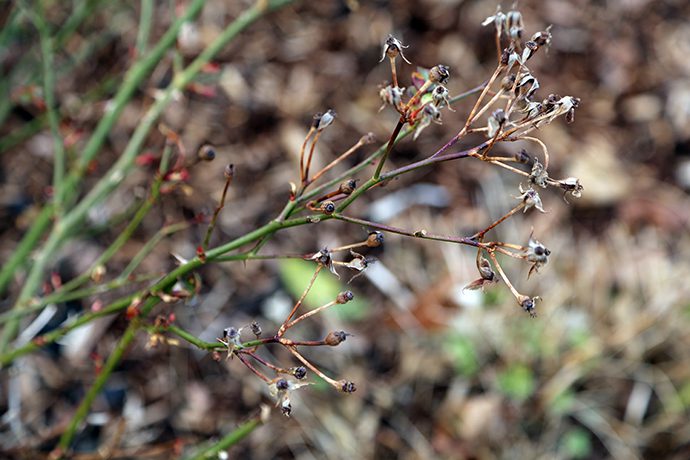
Even as the roses have started leafing out, you can still prune off winter damage and last year’s seeds. Remove any bare, dead canes and snip off the old ends and rosehips.

May is the month to prune blue hydrangeas! This shrub didn’t fare very well in the winter and there are no green buds on the canes. All those bare stems should be cut right to an inch or two above the ground. New growth will come up from the base but this plant won’t flower this summer.
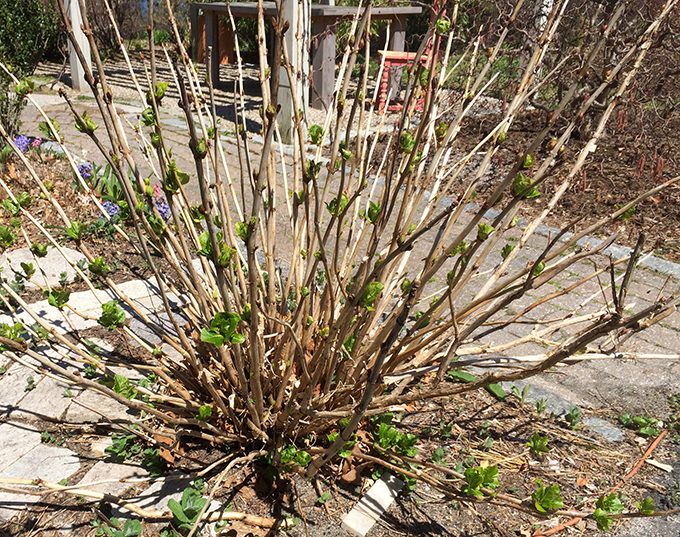
This hydrangea has lots of buds and leaves that are green on the stems. The only pruning you should do on this plant is to remove any bare canes and snip off any tops of stems that have died back. Don’t remove any of the green growth as that is where the flowers are for this coming summer.
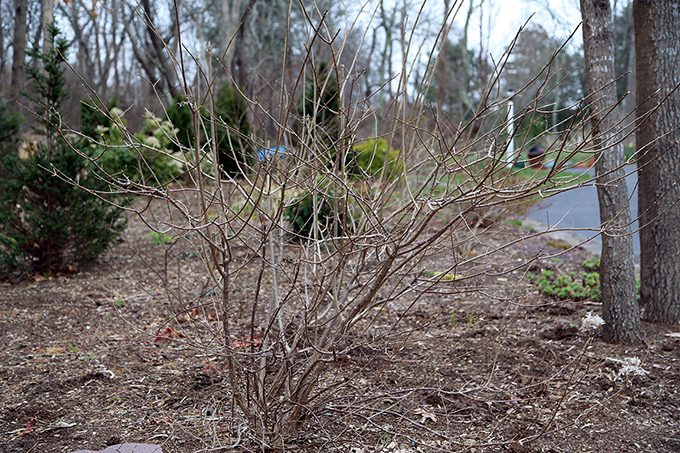
Limelight and other varieties of the Hydrangea paniculata can be pruned now. First look for dead branches and remove any you see. Secondly, look for stems that are crossed and rubbing against each other: remove one, usually the one that is headed into the center of the plant or going off in a funky direction. If both are headed away from the center, remove the oldest one. Next step is to look for stems that are going into the center of the plant. Remove those. Finally, the long canes that are left can be clipped back if you want to double the growth of those stems. The plants will produce two stems just underneath each of those cuts.
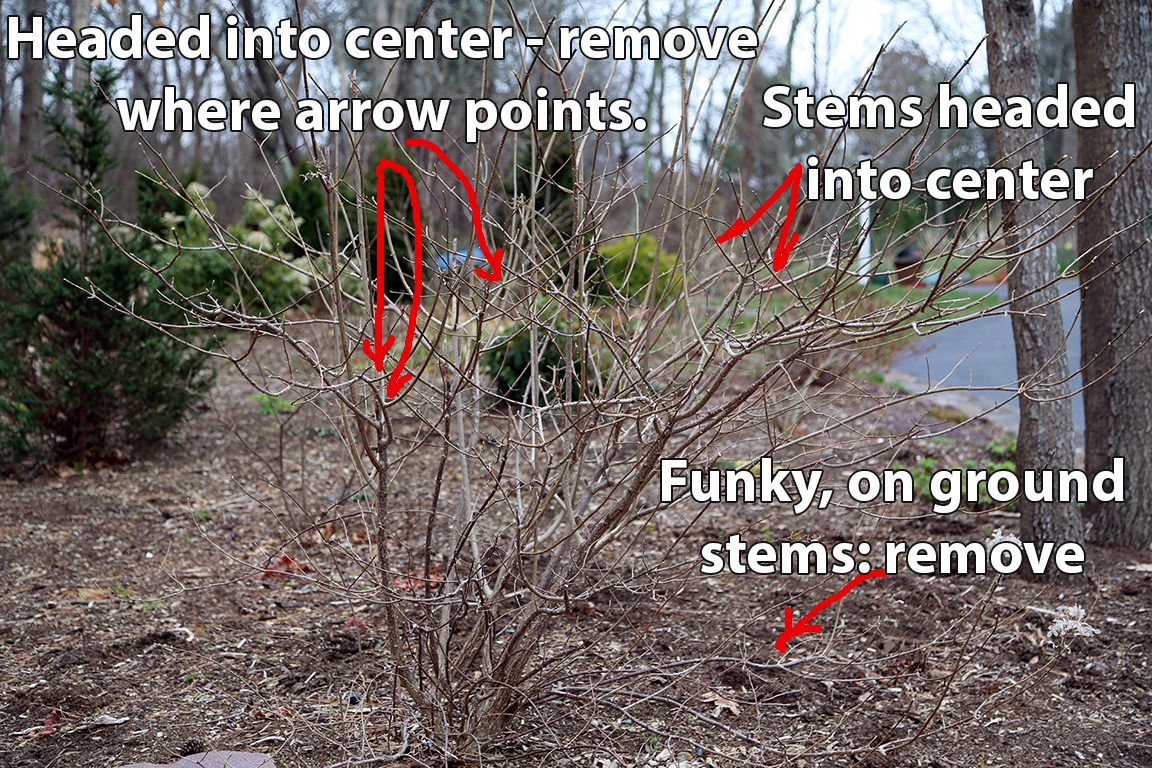
The red arrows show some of the branches that should get removed on this LimeLight Hydrangea.
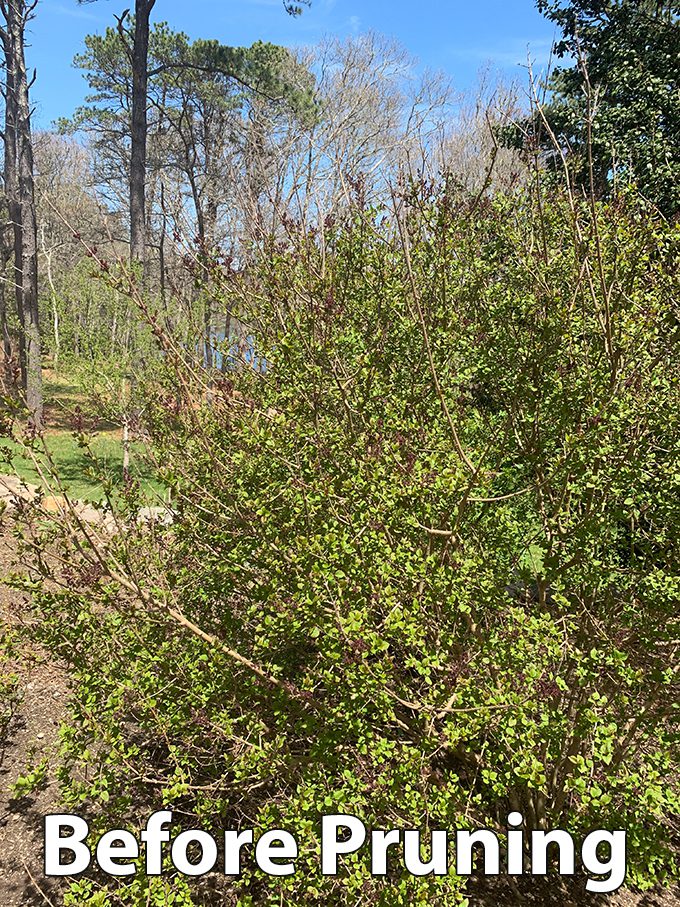
Even spring flowering shrubs can be given a touch-up pruning to improve appearance. While you don’t want to shear a lilac or azalea now, for example, some of the tall, bare branches can be removed and dead wood taken away.
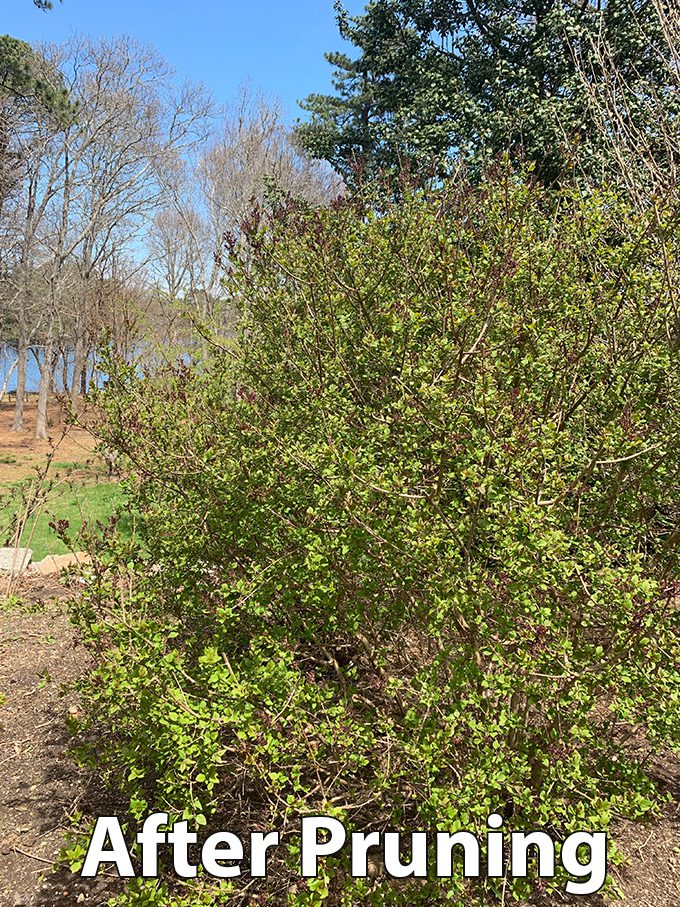
Here is the after shot – no more random, bare branches! Any heavy pruning should be done right after flowering. This is a Bloomerang Lilac, a variety that will produce more flowers later in the summer. To stimulate more flowers and promote bushy growth, the blooms should be snipped off after they fade. This can be done one flower at a time, or the plant can be sheared below where the flowers were.
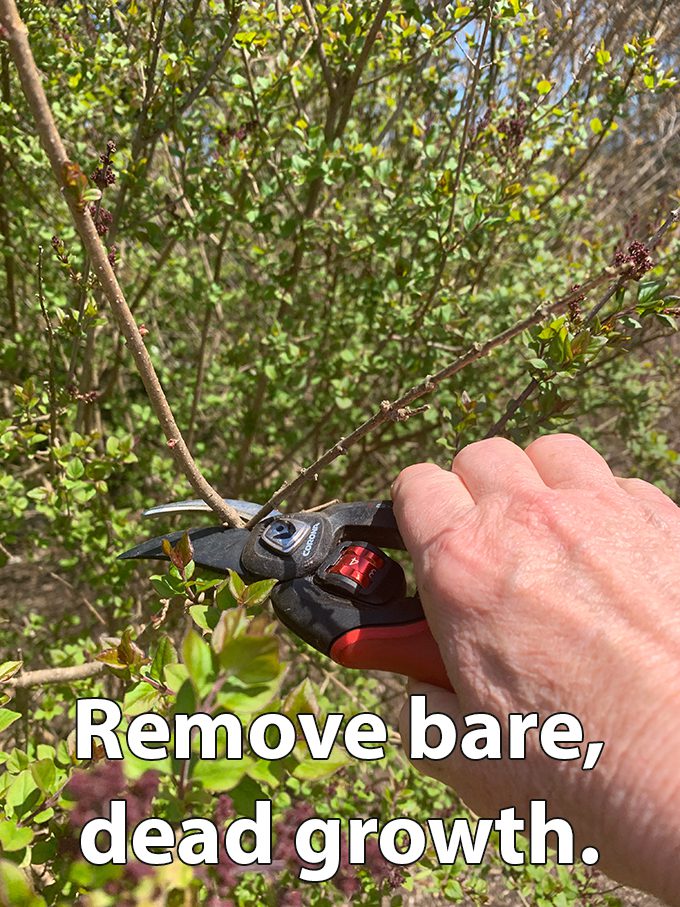
Dead wood can be removed anytime from any plant, but shrubs that bloom before the end of June should only get touch up pruning in May. More can be cut after the flowers finish if needed.
Remember that pruning should usually be done to improve appearance not control size. Plant grow to be the size and shape their genetics dictate, so sometimes it’s better to move a plant that’s outgrown its location instead of trying to make it smaller.
Unlike weeding or mowing the lawn, pruning is a garden job that doesn’t have to be done frequently. It’s a wonderful way to get outside to experience nature; even on a cloudy day being in your yard snipping your shrubs and listening to the birds sing can be uplifting. Tip for success: do not use old, dull cutting tools. Your pruners, lopers and saw should be sharp enough to do the job quickly and easily! If you are finding that you have to struggle to make a cut, you either need to sharpen your existing tools or get new ones.
Subscribe To Our Newsletter
Sign up for our weekly email about sales and events.
